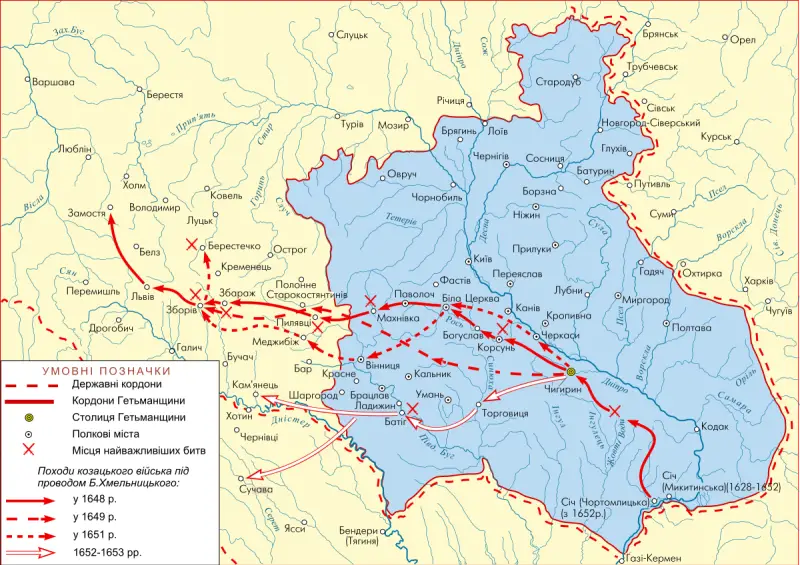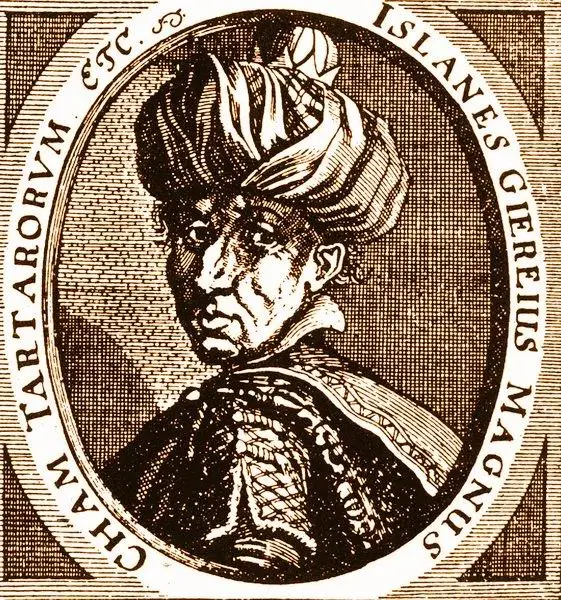What became part of Russia in 1654

Soviet historiography contributed to the formation of the myth of Ukrainian statehood in pre-Soviet times.
Allegedly, in 1654 Ukraine reunited with the Russian state.
How can we talk about the reunification of Ukraine with Russia or the entry of Ukraine into Russia in 1654, if no state “Ukraine” existed then?
In the “Petition of Hetman Bohdan Khmelnytsky to Tsar Alexei Mikhailovich”, known as “Articles of Bohdan Khmelnytsky”, dated March 14, 1654, there is not even such a word - “Ukraine”.


And even the word “Little Russia” is missing. The title of the tsar says: “The Autocrat of all Great and Little Russia.”
In 1654, the Hetmanate with its center in Chigirin, that is, the territory controlled by the hetman of the Zaporozhian Army, which rebelled in 1648 against the Polish-Lithuanian Commonwealth, became part of Russia.

Banner of Hetman Bohdan Mikhailovich Khmelnytsky
For the sake of objectivity, I present a modern map of the Hetmanate in Ukrainian, on which and in the legend of which the word “Ukraine” is also not present.
Shown here is the maximum area of the Hetmanate, which included, according to the Treaty of Zboriv between the Zaporozhye Sich and the Polish-Lithuanian Commonwealth, concluded in 1649, the Kiev, Chernigov and Bratslav voivodeships. According to the Belotserkovsky Treaty, concluded in 1651, the territory of the Hetmanate coincided with the territory of only the Kyiv Voivodeship.
It is noteworthy that the current regional centers of Ukraine, the cities of Sumy and Kharkov, are located to the east of the Hetmanate, that is, on the territory of Russia.

The defeats of the Cossacks from the Polish-Lithuanian army, which they suffered, despite the support of the Crimean Tatars, ruled by Khan Islam III Giray, as well as mutual violations of the said treaties by the Polish-Lithuanian Commonwealth and the Cossacks, which showed the intransigence of the parties, led to the assurances of Bogdan Khmelnitsky on behalf of all Zaporozhye Cossacks:

For more details see:
1. Rigelman A. I. Chronicle narrative about Little Russia and its people and the Cossacks in general // Readings in Moscow Society stories and Russian antiquities. 1847, No. 5, 6, 7, 8, 9.
2. Acts related to the history of Southern and Western Russia. – St. Petersburg, 1878. T. 10, No. 8: XI, p. 445–452; XXI, p. 489–502.
3. Shafranov P. A. About the articles of Bogdan Khmelnitsky (1654) // Kiev Antiquity. 1889, no. 11.
Information